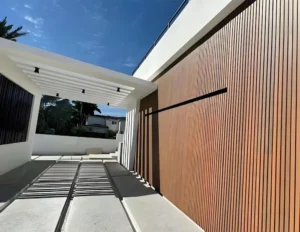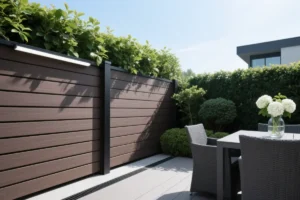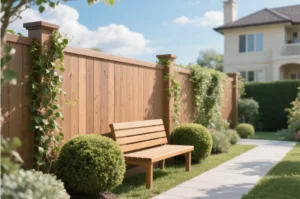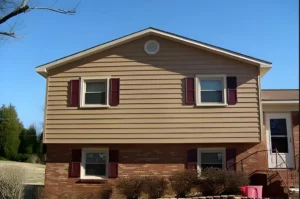Installing a new deck is one of the most exciting home improvement projects, but it’s also one that must comply with local building codes. Among these regulations, deck railing height requirements are critical for ensuring both safety and long-term durability.
While most areas require a minimum railing height of 36 inches (91 cm), other factors such as baluster spacing, load capacity, and regional code variations also play an important role. This guide explains everything you need to know about railing height, spacing rules, and material choices—helping you design a safe, stylish, and code-compliant deck.
Key Takeaways
- Minimum deck railing height requirements in the U.S.
- Baluster spacing rules for safety
- Load-bearing standards according to IRC and IBC codes
- Recommended materials for deck railings

1. Deck Railing Height Requirements
In the United States, most residential building codes—such as the International Residential Code (IRC)—set clear requirements for railing installation:
- Any deck higher than 30 inches (76 cm) above grade must have a protective railing.
- Standard railing height is at least 36 inches (91 cm) for residential properties.
- Some regions, such as California, require a minimum height of 42 inches (107 cm), especially for multi-family dwellings or commercial spaces.
These height requirements are designed to prevent falls and protect children, pets, and guests. Even if your local building authority allows shorter railings, going slightly higher can enhance both safety and visual appeal.
📌 Tip: Always check your local building department or consult a licensed contractor before finalizing your deck railing design.
2. Railing Spacing Code: Balusters, Gaps, and Posts
Even if the height is correct, improper spacing can still create safety hazards. Railing spacing codes address gaps between balusters, the space beneath the bottom rail, and the maximum distance between structural posts.
Baluster and Infills
- Vertical baluster spacing: The gap between balusters or other infill components should be no more than 4 inches (10 cm). This prevents small children from slipping through.
- Bottom rail to deck floor: The gap between the decking surface and the bottom rail should also be no more than 4 inches.
- Stair triangle exception: The triangular gap formed by the stair tread, riser, and bottom edge of the railing can be up to 6 inches (15 cm).
Post Spacing
- Maximum post spacing: For prefabricated railing systems, posts should be no more than 8 feet (2.4 m) apart to maintain structural strength.
- If you are using cable or glass panel railings, check the manufacturer’s guidelines—these materials may require tighter post spacing.
3. Load-Bearing Standards (IRC/IBC Requirements)
Deck railings must not only meet height and spacing rules—they must also be strong enough to resist various forces. According to IRC/IBC:
| Test Category | Minimum Load Requirement |
|---|---|
| Uniform load on railing | 200 lbs (91 kg) |
| Uniform load on infill | 50 lbs (23 kg) |
| Uniform load on handrail | 200 lbs |
| Concentrated load on railing | 200 lbs |
| Concentrated load on infill | 50 lbs |
| Linear load on railing | 50 lbs per square foot |
These standards ensure that railings can withstand everyday use, accidental impacts, and even strong winds.
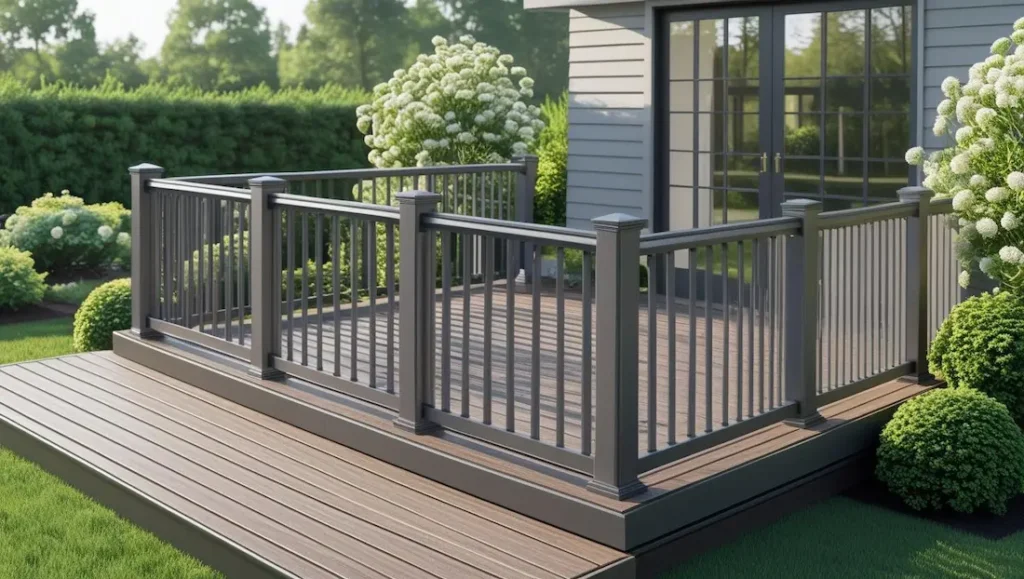
4. Choosing the Right deck Railing Materials
The right railing material balances safety, style, and maintenance needs. Common code-compliant options include:
Composite/WPC Railings
- Example: Gladol Premium WPC railing systems
- Pros: Low maintenance, weather-resistant, long lifespan
- Works well with powder-coated aluminum posts for a sleek, modern look
Metal Railings
- Includes aluminum, steel, or wrought iron
- Extremely durable, ideal for modern and industrial designs
- Can be combined with cable or glass infill for an open view
Wood Railings
- Classic look, affordable upfront
- Requires regular sealing or staining to prevent rot
📌 Recommended Combination:
A WPC or composite railing paired with powder-coated aluminum posts—low maintenance, highly durable, and visually appealing.
5. Style Considerations
Meeting code doesn’t mean sacrificing style. Popular modern railing designs include:
- Cable railings: Minimalist look, great for preserving views
- Glass panel systems: Adds a contemporary touch and blocks wind
- Fast-install panel systems: Brands like Gladol offer modular designs for quick assembly
When selecting a style, make sure it not only complements your deck but also complies with all local safety and spacing regulations.
6. Important Safety and Compliance Tips
- Any deck more than 30 inches above ground must have a railing of at least 36 inches (or higher if required locally).
- Always check local codes before purchasing materials.
- If hiring a contractor, ensure they are familiar with IRC and IBC requirements.
- For DIY projects, use a level and measuring tape to ensure all posts, rails, and balusters meet spacing rules.

Conclusion
Following deck railing height requirements and spacing codes is essential for creating a safe, functional, and beautiful outdoor space. From selecting the right materials—like WPC composite railing systems—to ensuring correct installation, compliance will protect both your investment and the people using your deck.
If you’re unsure about specific regulations in your area, contact your local building authority or work with a certified contractor. With the right planning and materials, your deck railing can be both code-compliant and a stylish focal point for your backyard.
To know more about a deck, read parts-of-a-deck.

